The book titled as Kailash Sankhala:TIGER! The Story Of The Indian Tiger in about 230 pages on soft, newsprint-kind paper, by Kailash Sankhala can be summarized as the first and last treatise on almost all aspects of this prime predator for all other books published so far do not contain what has been detailed in this one. It was published in 1978 and then also bore ISBN (00 0 216124), printed in Britain by William Collins Sons & Co. Ltd. through an arrangement with Rupa & Co of India (possibly for distribution). It was dedicated to Padmaja Naidu, a close friend of Jawahar Lal Nehru, and “Billy” (William Collins).
KS admitted that he received hefty support from Bill. It stands clarified how this book became a toast of the tiger loving class – good English for all possible details on the animal in question. He was extremely happy at its outcome enjoying his posting as Chief Wildlife Warden, Rajasthan, with main office in Jaipur. He held Bill as his friend and mentioned that the supporter died almost after completing this work. It has answers to most question to be put by a person on life story of this beautiful striped mammal.
By dint of a long tenure at Delhi Zoo, he kept busy in experimenting with tigers housed therein and to his fortune his joining forest service almost coincided with the white tiger being found south of Rewa in Madhya Pradesh by prince Martand Singh, who maintained them and finally delivered to this zoo. First hand observations and knowledge gained on hand-rearing such animals educated this writer on such aspects as one would not be able to touch upon as only a forester was capable to handle animals.
He had received Jawahar Lal Nehru Memorial Fellowship to study tigers which he fully utilized on studying tigers. He thanked both Padmaja Naidu and Dr. Karan Singh. Singh happened to be Secretary of this Fund, a person who lent indescribable support to KS and hand picked him to become first Director of Project Tiger when it was launched in 1973 though the book said it was started in 1972.
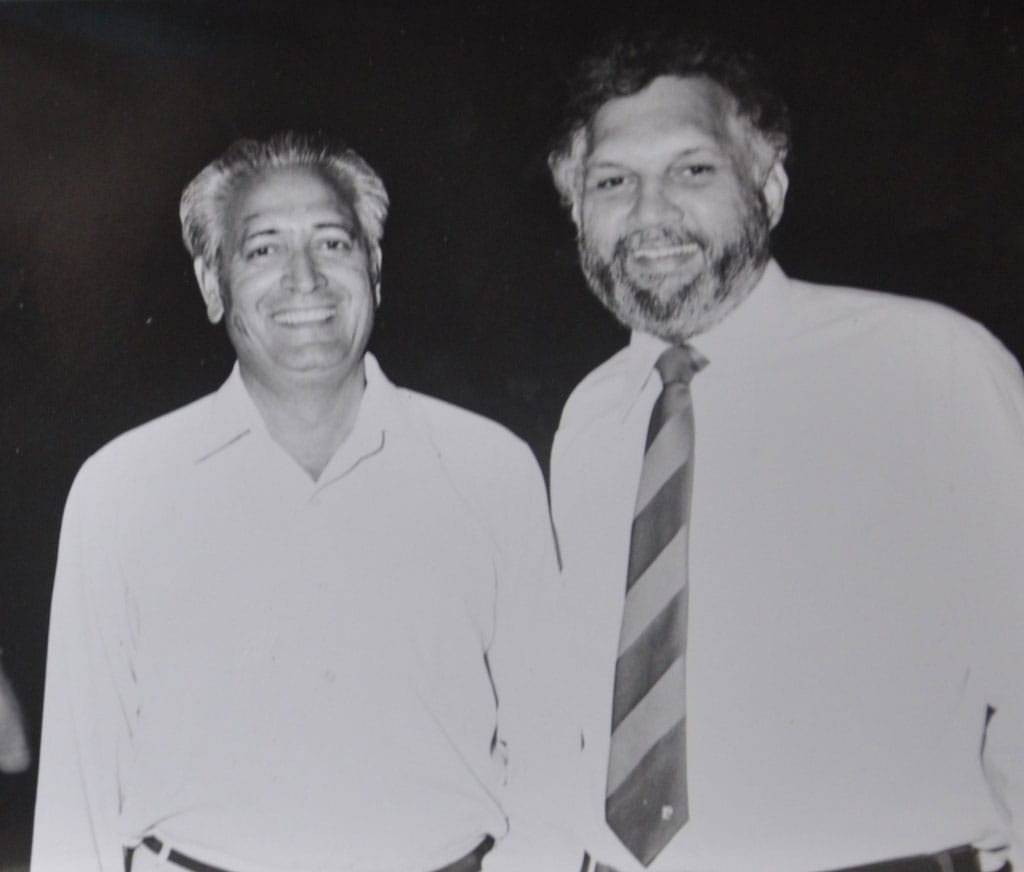
The very title described — KS as a self-portraying person and a perfectionist at highlighting his name, and usually only his name. On the cover, his name supersedes the name of tiger, which has an exclamation-mark as suffix, wisdom encashed to the best. Its cover has a tiger crouching over green grass, its eyes aiming at the lens of camera. It is in colours which were not prevalent in those days.The last cover shows the author sitting by side of a tiger with his left hand almost garlanding the animal, both aiming at lens. Was it Jim, the captive born tiger who was treated by him like a family member, or any other, the book is silent over it.
The very sight of a person caressing a tiger in those days was awe inspiring, to this day also in my view. It forecast bold stand this person took throughout his life and it equally signaled an incredible appeal for conservation, a word which had just started gaining currency in 70s.
A cycle-sawar came at my place in Jaipur one evening to hand over this book. In his hand-writing, the opening page read:
“To Harsh,
For your outstanding and sustained interest in wildlife of Rajasthan” – (signed) Kailash Sankhala, 13.9.78”
I telephoned him to thank for the gesture and he humbly said more words which surprised me greatly for he was known to all to care the least for humans and always announced that his body and soul were wholly devoted to tigers and their welfare. Which happened to be true as he categorically remarked at more than once place that his career masters had taught to spend 20 days to be spent in field in a month. Calf-love for wilderness is best inculcated while one lives in forests, mere visits during morning-afternoon would be like chance observations. He seemed having enjoyed it to the hilt.
…Bhanwaria came to open gate of forest chowki as he found Kailash Sankhala sitting at door steps and waiting for him. He travelled by a bus, which passed through heart of this sanctuary for decades, and shouted, “Kalighati” so the driver applied brake to let him get down with his iron-trunk and commence merger with wilderness. He outlines about the hide, most said created by him for himself. It looked like a square-shaped shooting-box having low ceiling, so one had to enter on knees but ideal in summer also for it had stone roof and several hole like windows in varying size.
He listed birds and ungulates that trooped down water surface one species after other soon after sun had dipped down towards Governor Drive, as the name was given to the road by one of the forest officers. His botanist mind appeared exuberant: In August Kalighati turns verdant green and as winter approached foliage would be copper-brown with grass turning yellow, in spring the leaves would be dry and would fall on ground by March, it was leafless and bone-dry in summer, the floor is like a cushion of fallen leaves — inches thick.

Kailash Sankhala’s sensibility was uncommon and unmatched. Single-minded approach and dogged faith, were inherent in his psyche. He pursued nature in totality and would hate any incursion while was in forest, to an extent that often he was observed having wordy dual with visitors to the same zone in a forest, at times he ordered some tourists to be expelled from the park. In solo pursuit, he was probably ever ready to have a wager who ever it may be. The same person would be a different character when escorting a VIP or politicians and would remark – educating them was important. He knew how to apply butter to both sides of the slice as though.
Kailash Sankhala’s analysis and assessment of subject is better understood by going through the names of writers he quoted in his book: Dr. Gustav Krik of Germany, Dr. Theodore H. Reed, Director of National Zoological Park, Washington DC, William G. Conway, Director of New York Zoological Park, Prof. Malcom Coe of Oxford University, Dr. Berhnard Grzmick who introduced him the long-lens to attempt better photography.
Does tiger hunt by smell? He has tried to exemplify own experiences with 160 kills examined and more than 100 baits of buffalo calves fixed. According to Hamilton, the nose was not used to smell a prey while tiger would hunt. Hamilton, Smythies, Locke & Baze, Baker, Glassford, Champion, Burton, Corbett, Anderson, all rejected the theory that it was this mammal’s smelling power that led it to attack or kill preys. Nose had hardly any role, they summarized. To reach
same conclusion with marginally differing results, he applied studies on eight tigers at Delhi Zoo, by hanging a pig-carcass above ground and at height to assess if tigers moving below it would raise necks to smell and express own reactions? The tigress is reported to have smelt it but males paid no heed to it.
How many of forest officers or employees received grant similar to one KS was blessed with to study singularly such a wild mammal, though his booty came from a zoo? Analysis of killing styles informs his comparisons with a few experts and own assessment on basis of more than a hundred tigers he would have observed on the kill – it grabs the throat, twists neck of the prey and applies total weight of his paws, body etc to cause rupture of some veins leading to death of the animal under attack.
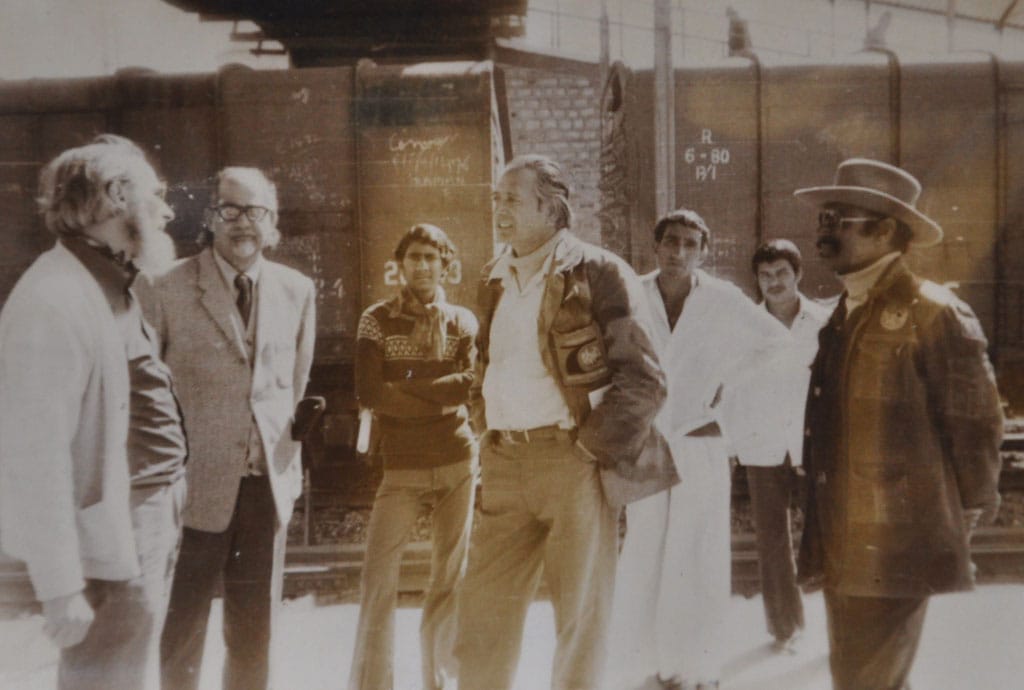
His statements: Chowsinga? Almost unstudied deer, only Mudumalai and Panna have yielded some recognizable studies across Indian grasslands, is cited to report at a water hole only once in twenty four hours and spend maximum two minutes in filling his belly. Langur never takes a bath yet it happens to be the cleanest among wild animals…..mating by tigers averaged maximum during winter, some in summer, pregnancy detection was not easy until she would be about three month carrying.
The Delhi Zoo reported six cubs delivered by a tigress. J.W Best (1932) reported a tigress taking care of seven cubs. KS cited a female with five cubs in Ranthambhore in 1976, this I learnt from Fateh Singh as well, but both remained elusive when asked to go and observe her? In his view maximum births of tigers occurred in summer (March – June) and also during monsoon (August – October). Contemporary observers have varying details to offer. Forest authorities have documented approximate time of birth though data is not being shared – lack of love for scientific pursuits. KS always vowed by science. I would say he was the one who at times also broke scientific norms!
For him “tiger is a creature of hypnotic power and fascination. It is at apex of nature’s pyramid, a balancing force on all animals and creatures within its kingdom.” All his books are his personal stories of wildlife, nay tigers as he was apt to correct one. He called himself as “tiger addict.”A remarkable person, his courage and determination were matchless qualities. Many may be born with them and remain having not applied them throughout life to attain the goal. How many people have set goals? He called himself as a “photo-naturalist” and such a character can be a “nuisance”, which, I would emphasize to say, he often proved to be one!
He admitted having received active cooperation of forest colleagues, naming them in priority: Bharat Singh, O.P. Mathur, J.P. Kapoor, Fateh Singh, Y.D. Singh (his brother who served at Jodhpur Zoo), H.S. Panwar, who became Director of Project Tiger and also first Director of Wildlife Institute of India. For photography, he extended appreciation to Kashinath and A.R. Tak, a photographer in Jaipur who was his father-in-law, and who lent abundant support to the son-in-law.
The first book carried stunning illustrations in black-and-white, of tigers in almost all actions and moods, some pensive, others frolicking and attacking preys in various ways. He cared to say that, “Champa Lal and Brahm Dev traced drawings from my photographs” – the word illustration was not in vogue for him? They are brilliant art work and I like to state that all other books on this mammal did not care to employ artists to exercise similar or better art to portray wild animals.
I am of opinion that India lacks brilliant illustrators, it is not a final judgement but sustained experience. Overseas illustrator do a job outfoxing the wild species eg., lapwings, chats, ospreys, tree creeper, etc. David Thelwell creates lyricism in his birds and animals, he did one of Great Indian Bustard after observing it in Sudasuri area. Darren Rees did many species and kindly presented me one of his pencil drawing on return from a Scottish walk. KS admitted having received ample editorial support as obviously he admitted facts about his English language. “Sir Hugh Elliott read the script and suggested several changes” he wrote at one stage.
Kailash Sankhala was born in Jodhpur and was proud to rub shoulders with those coming from Marwar region. He had first posting on 1 April 1953 in Bundi: Col. William Rice wrote in Hunting in Rajputana (1857) that Bundi then had maximum tigers as compared to all other areas where he had hunted them! A stint in Khairwara (south of Udaipur) was like passing time. Finally at Sariska, he admitted having shot a tiger. The only photograph of him standing by side of a tiger carcass was unearthed by me from his almirah while he was trying to be finicky and some copies had to be circulated in his office to let him realize difference between what he preached and what he did. The photo shows tiger lying in Jaipur Zoo? Not in Sariska.
His photo passion sparked off while he had next posting in Bharatpur. He admitted having received tips on this art-craft from Salim Ali and also said it was F.W Champion who gave him best teachings on cameramanship. This British was a forest officer and wrote, “With a camera in Tigerland.” KS could not attain what Champion did – night photography with contemporary lens and cameras. The one he took of a tiger in north-west of Corbett is displayed in Garwahl Rifles Officers’Mess in Lansdown, this writer admired it but was not allowed to take photographs, a worth visit place for wild trophies.
Kailash Sankhala as the authoritative, yes he was. I had quite a few skirmishes which erupted all of a sudden. However, peace prevailed after hot-blood affairs. After he retired in 1983, he had realization and often invited me to his bungalow to discuss and issue comments, like – nothing was happening in forest department! His wife, Suraj would cook ‘bajre’ bread and both would serve me in person, after throats had been amply moistened with not so sweet liquid. He was fond of it. I recall having called on him at Apollo Hospital, Madras (it was this name then) where he had a heart operation. He had plans to do big things and always cited next agenda, but often wondered what would happen to his stock of negatives, slides, photographs and above all books?
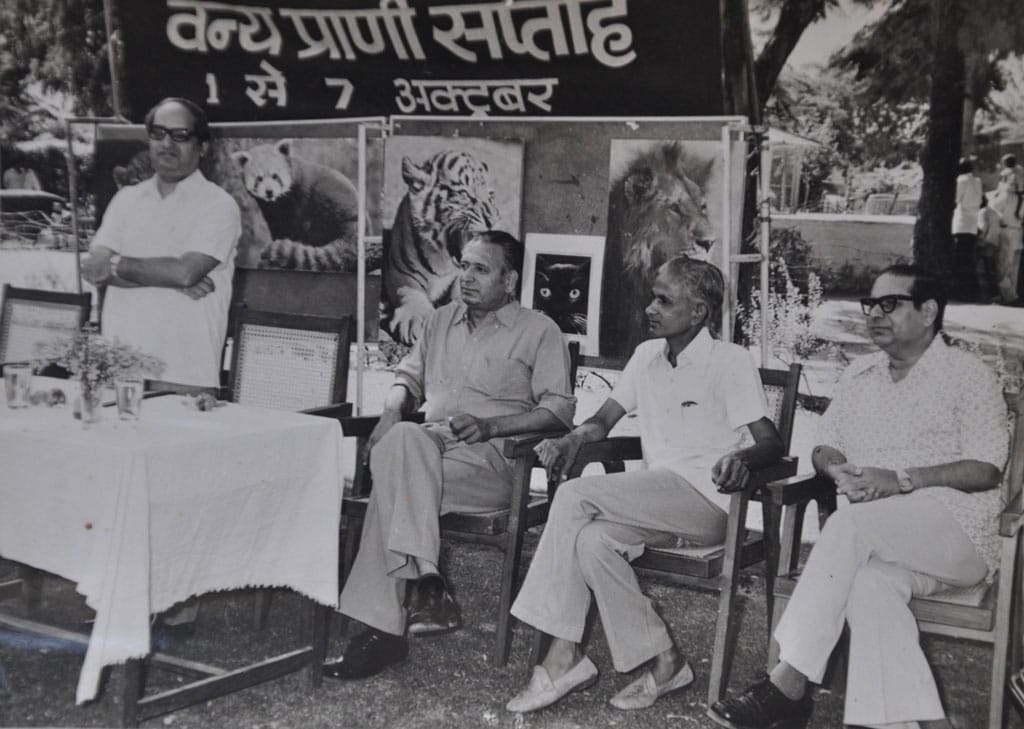
I gave shoulder to his body at the funeral as Bharat Singh asked me – will you organize news in press? After a few days I received a call from Manohar Prabhakar, then editor of the Rajasthan Patrika, asking me to do obituary for KS. I bluntly conveyed that we had not so sweet association so how would I justify? Death levels up all differences, he gave a lesson to me. I wrote a piece on him. It sparked off variety of gratitude among his relations in Jodhpur which I experienced almost each time I visited Y.D. Singh’s residence, he was his brother and also a wildlife official of great consequence.
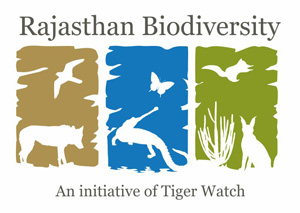

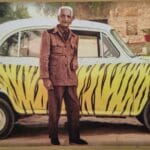
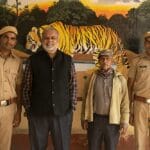
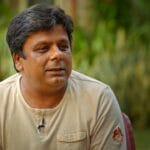
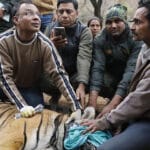

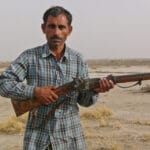



Kailash Sankhala ji was probably the best candidate to be the first Director of Project Tiger. His greatest leadership quality was to identify his field leaders and then give them a free hand to do what they thought was the best for the park. He would challenge them but then leave it to them to complete the challenge. My father was lucky to be one of his hand picked field leader at Ranthambhore. Some of the most game changing events happened as a result of this partnership which changed the course of Ranthambhore and the rest is history. He was a towering personality and it was always a pleasure to be with him although he didn’t always like other photographers to be around him when he was in the jungle. I wish today’s Directors were like him giving the freedom to field officers to have local solutions to local problems instead of the current NTCA trying to dictate what every park should do. It is demoralising for the officers and more often than not it becomes a blame game when things go wrong. I have many found memories with Kailash Sankhlaji which I will always cherish. Thank you for this article Harshvardhan ki brought back many memories
Has India developed an un-explained tendency to undermine, nay forget those who coined conservation-values eg., Kailash Sankhala, and also Fatji? SR Chowdhary as well. No mention of such stalwarts as Project Tiger’s golden jubilee is being celebrated during 2023, is it being celebrated?